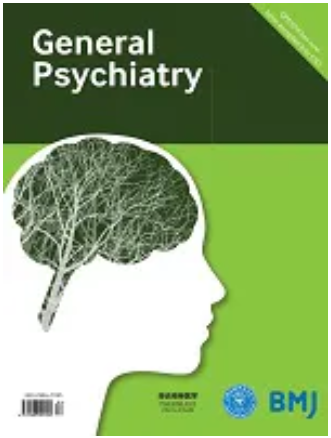Methodological considerations of priming repetitive transcranial magnetic stimulation protocols in clinical populations
IF 5.3
3区 医学
Q1 PSYCHIATRY
引用次数: 0
Abstract
To the editor: Repetitive transcranial magnetic stimulation (rTMS) is a neuroplasticity-enhancing technique that modifies brain responsiveness to various therapeutic modalities in clinical psychiatric and neurological applications.1 Furthermore, its effect can be attributed to long-term potentiation (LTP) or long-term depression (LTD)-like neuroplasticity. However, responsiveness to rTMS is largely variable in healthy and pathological brains2 and is mediated by complex biological mechanisms. Metaplasticity refers to a higher-order plasticity mechanism in which the direction and magnitude of synaptic plasticity are modified by prior neuronal activity and is believed to be a significant factor leading to the response variability of rTMS.3 According to its mechanism of action, the threshold for induction of LTP and LTD is dynamically adjusted to the level of prior neuronal activity: a low level of prior neuronal activity slides down the threshold to preferentially induce LTP. By contrast, a high level slides up the threshold to preferentially induce LTD.4 The induction of metaplasticity has been demonstrated in the human cortex using rTMS. Successively applying two identical rTMS protocols may lead to the reversal of the aftereffect of the protocol owing to the saturation of LTP/LTD and homeostatic regulation via metaplasticity. By contrast, pairing two non-identical stimulation protocols appears to induce additive neuroplastic effects through therapeutically beneficial metaplasticity induction.4 Therefore, researchers have used priming protocols to stabilise and increase the aftereffects of the subsequent conditioning session (figure 1A). A total of two kinds of priming protocols for inducing therapeutically beneficial metaplasticity, ‘preceding excitation enhances subsequent inhibition’ and ‘preceding inhibition amplifies subsequent excitation’, have been tested with conventional high-frequency/low-frequency rTMS as well as intermittent/continuous theta burst stimulation (iTBS/cTBS) in the M1 of healthy individuals, measured using motor-evoked potential (MEP).5 Figure 1 (A) Design of priming rTMS protocol and its underlying sliding threshold model: a low level of neuronal …在临床人群中启动重复经颅磁刺激方案的方法学考虑因素
致编辑重复经颅磁刺激(rTMS)是一种增强神经可塑性的技术,可改变大脑对各种治疗模式的反应性,应用于临床精神和神经学领域1。此外,其效果可归因于类似长期电位(LTP)或长期抑制(LTD)的神经可塑性。然而,健康大脑和病理大脑2 对经颅磁刺激的反应性在很大程度上是不同的,并且由复杂的生物机制介导。3 根据其作用机制,诱导 LTP 和 LTD 的阈值会根据先前神经元活动的水平进行动态调整:先前神经元活动的低水平会降低阈值,从而优先诱导 LTP。与此相反,高水平的神经元活动会使阈值上升,从而优先诱导 LTP。连续应用两个相同的经颅磁刺激方案可能会导致方案后效应的逆转,原因是 LTP/LTD 饱和以及通过元弹力进行的同态调节。相比之下,将两种非完全相同的刺激方案配对使用,似乎可以通过诱导对治疗有益的元可塑性,诱导出相加的神经可塑性效应。4 因此,研究人员使用启动方案来稳定和增加后续调节疗程的后效(图 1A)。研究人员使用传统的高频/低频经颅磁刺激以及间歇/连续θ脉冲刺激(iTBS/cTBS)对健康人的 M1 进行了测试,并使用运动诱发电位(MEP)进行了测量。5 图 1 (A) 启动经颅磁刺激方案设计及其基本滑动阈值模型:低水平的神经元...
本文章由计算机程序翻译,如有差异,请以英文原文为准。
求助全文
约1分钟内获得全文
求助全文
来源期刊

General Psychiatry
医学-精神病学
CiteScore
21.90
自引率
2.50%
发文量
848
期刊介绍:
General Psychiatry (GPSYCH), an open-access journal established in 1959, has been a pioneer in disseminating leading psychiatry research. Addressing a global audience of psychiatrists and mental health professionals, the journal covers diverse topics and publishes original research, systematic reviews, meta-analyses, forums on topical issues, case reports, research methods in psychiatry, and a distinctive section on 'Biostatistics in Psychiatry'. The scope includes original articles on basic research, clinical research, community-based studies, and ecological studies, encompassing a broad spectrum of psychiatric interests.
 求助内容:
求助内容: 应助结果提醒方式:
应助结果提醒方式:


